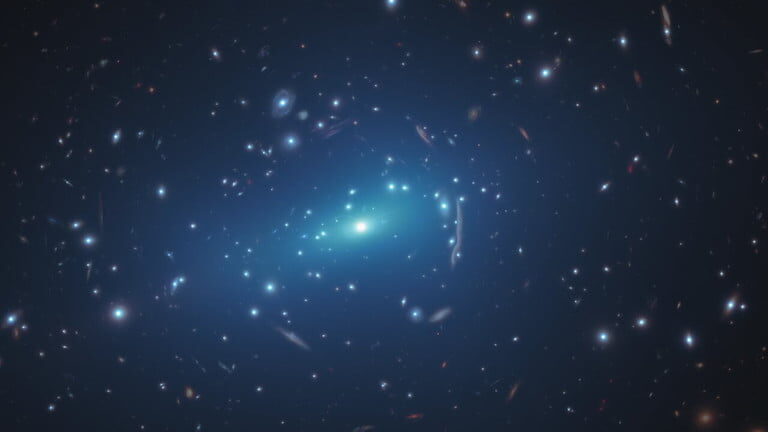A new study using the Hubble Space Telescope suggests that we understand dark matter even less than we thought previously. The hypothesized matter is thought to exist based on the mass of galaxies, but has never been directly observed. Now, new research suggests that our predictions about how dark matter affects space-time might be way off.
Hubble researchers used a technique called gravitational lensing, in which distant objects are observed by looking at the way light is bent by the gravity of closer objects, with the closer objects acting like a magnifying glass. This allowed them to spot areas that likely contain dark matter, which can be seen affecting the distortion of space-time even if it can't be seen directly.
The finding that surprised the researchers was that even small amounts of dark matter in clusters created a gravitational lensing effect that was 10 times stronger than they had expected.
This suggests there is something missing from our understanding of dark matter. "There's a feature of the real universe that we are simply not capturing in our current theoretical models," team members Priyamvada Natarajan of Yale University said in a statement. "This could signal a gap in our current understanding of the nature of dark matter and its properties, as these exquisite data have permitted us to probe the detailed distribution of dark matter on the smallest scales."

Using a combination of Hubble and the Very Large Telescope, astronomers could identify galaxies and estimate their mass, which indicates how much dark matter each galaxy is likely to contain.
"Galaxy clusters are ideal laboratories in which to study whether the numerical simulations of the universe that are currently available reproduce well what we can infer from gravitational lensing," lead author Massimo Meneghetti of the INAF-Observatory of Astrophysics and Space Science of Bologna in Italy said in the statement.
This means more work is needed to truly understand what dark matter is and how it interacts with galaxy clusters. "We have done a lot of testing of the data in this study, and we are sure that this mismatch indicates that some physical ingredient is missing either from the simulations or from our understanding of the nature of dark matter," Meneghetti said.



Fortunately, the only thing more stupid than Black Holes and Dark Matter are - politicians ...